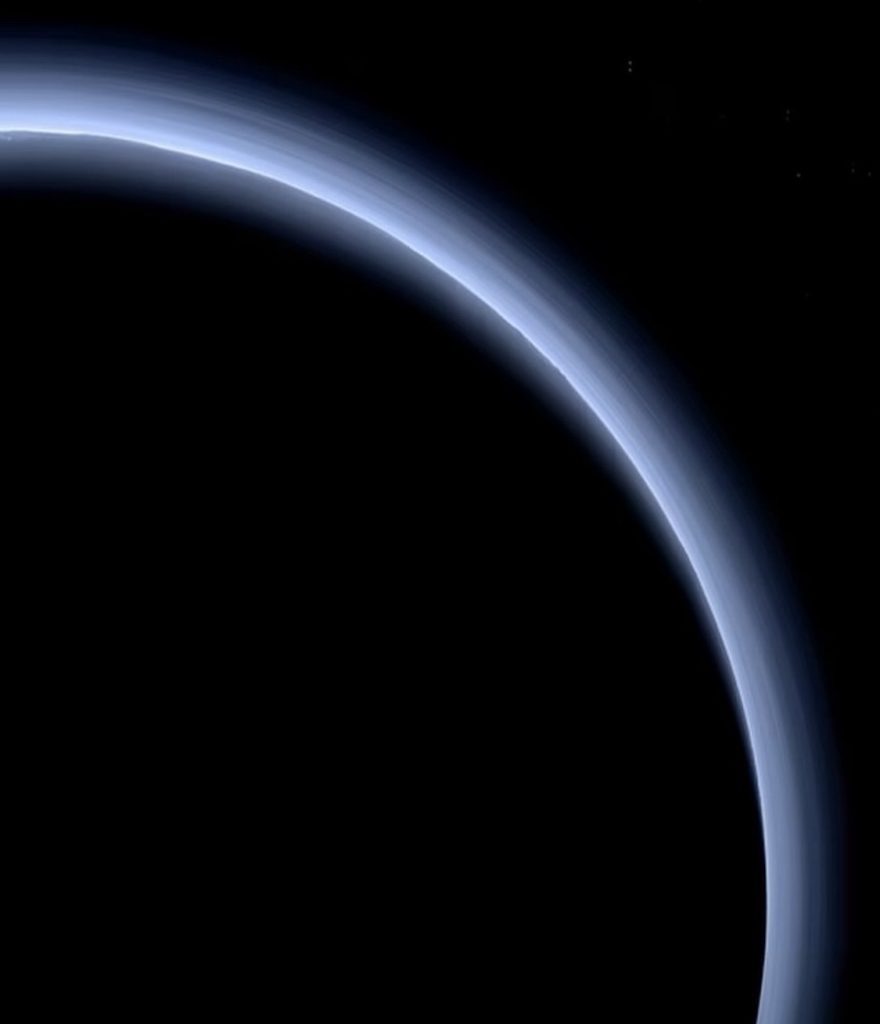The New Horizons spacecraft, on its mission to Pluto, captured a stunning image of the planet’s thin atmosphere from over 200,000 kilometers (or 120,000 miles) above the dwarf planet’s surface. Scientists speculate that the haze is due to a photochemical smog, created when sunlight interacts with molecules like methane to produce complex hydrocarbons. These tiny particles then scatter sunlight, creating the bright blue haze that’s visible from more than 200,000 kilometers (or 120,000 miles) away.


The New Horizons image of Pluto’s atmosphere, captured on July 14, 2015, from 5.9 billion kilometers (or 3.7 billion miles) away, shows the dwarf planet’s silhouette in the top left corner. This silhouette is accompanied by haze and streaks of light similar to those seen near dawn and dusk on Earth. Pluto’s eccentric orbit, which varies in distance from the Sun from 4.4 billion to 7.3 billion kilometers (2.7 billion to 4.6 billion miles), causes its atmosphere to expand.
Image description:
Pluto’s dark background is highlighted by a blue arc, representing the planet’s thin atmosphere, which extends from the lower left to the top right of the image. The bright, sharp peaks of Pluto’s mountains are visible at the 11 o’clock position, casting shadows against the bright sunlight.
The blue arc of Pluto’s atmosphere, visible from the upper left to the lower right of the image, continues from the previous image. Haze can also be seen throughout the image, with the Sun casting shadows against the surface at the 9 o’clock position.

























+ There are no comments
Add yours